第152章
The bronchial tubes may be contracted as well as the ramifications of the pulmonary artery.Professor J.Henle has, amongst his Anthropologische Vorträge, an exquisite one on the 'Natural History of the Sigh,' in which he represents our inspirations as the result of a battle between the red muscles of our skeleton, ribs, and diaphragm, and the white ones of the lungs, which seek to narrow the calibre of the air-tubes."In the normal state the former easily conquer, but under other conditions they either conquer with difficulty or are defeated....The contrasted emotions express themselves in similarly contrasted wise, by spasm and paralysis of the unstriped muscles, and for the most part alike in all the organs which are provided with them, as arteries, skin, and bronchial tubes.The contrast among the emotions is generally expressed by dividing them into exciting and depressing ones.It is a remarkable fact that the depressing emotions, like fear, horror, disgust, increase the contraction of these smooth muscles, whilst the exciting emotions, like joy, anger, etc., make them relax.Contrasts of temperature act similarly, cold like the depressing, and warmth like the exciting, emotions.Cold produces pallor and gooseflesh, warmth smooths out the skin and widens the vessels.If one notices the uncomfortable mood brought about by strained expectation, anxiety before a public address, vexation at an unmerited affront, etc., one finds that the suffering part of it concentrates itself principally in the chest, and that it consists in a soreness, hardly to be called pain, felt in the middle of the breast and due to an unpleasant resistance which is offered to the movements of inspiration, and sets a limit to their extent.The insufficiency of the diaphragm is obtruded upon consciousness, and we try by the aid of the external voluntary chest-muscles to draw a deeper breath. If we fail, the unpleasantness of the situation is increased, for then to our mental distress is added the corporeally repugnant feeling of lack of air, a slight degree of suffocation.
If, on the contrary, the outer muscles overcome the resistance of the inner ones, the oppressed breast is lightened.We think we speak symbolically when we speak of a stone weighing on our heart, or of a burden rolled from off our breast.But really we only express the exact fact, for we should have to raise the entire weight of the atmosphere (about 820 kilog.) at each inspiration, if the air did not balance it by streaming into our lungs."
(P.55.) It must not be forgotten that an inhibition of the inspiratory centre similar to that produced by exciting the superior laryngeal nerve may possibly play a part in these phenomena.For a very interesting discussion of the respiratory difficulty and its connection with anxiety and fear, see 'A Case of Hydrophobia' by the lamented Thos.B.Curtis in the Boston Med.and Surg.Journal, Nov.7 and 14, 1878, and remarks thereon by James J.Putnam, ibid.Nov.21.
Origin of the Emotions, Darwin, pp.290-2.
La Physionomie et l'Expression des Sentiments (Paris, 1885), p.140.
Lange, op.cit.p.75.
Professor Höffding, in his excellent treatise on Psychology, admits (p.342) the mixture of bodily sensation with purely spiritual affection in the emotions.He does not, however, discuss the difficulties of discerning the spiritual affection (nor even show that he has fairly considered them) in his contention that it exists.
Ein Fall von allgemeiner Anæsthesie (Heidelberg, 1882).
Ziemssen's Deutsches Archiv für klinische Medicin, XXII.321.
The not very uncommon cases of hysterical hemianæsthesia are not complete enough to be utilized in this inquiry.Moreover, the recent researches, of which some account was given in Chapter IV, tend to show that hysterical anæsthesia is not a real absence of sensibility, but a 'dissociation,' as M.Pierre Janet calls it, or splitting-off of certain sensations from the rest of the person's consciousness, this rest forming the self which remains connected with tire ordinary organs of expression.
The split-off consciousness forms a secondary self; and M.Janet writes me that he sees no reason why sensations whose 'dissociation' from the body of consciousness makes the patient practically anæsthetic, might not, nevertheless, contribute to the emotional life of the patient.They do still contribute to the function of locomotion; for in his patient L.
there was no ataxia in spite of the anæsthesia.M.Janet writes me, apropos of his anæsthetic patient L., that she seemed to 'suffer by hallucination.' "I have often pricked or burned her without warning, and when she did not see me.She never moved, and evidently perceived nothing.
But if afterwards in her movements she caught sight of her wounded arm, and saw on her skin a little drop of blood resulting from a slight cut, she would begin to cry out and lament as if she suffered a great deal.
'My blood flows,' she said one day; 'I must be suffering a great deal!' She suffered by hallucination.This sort of suffering is very general in hysterics.It is enough for them to receive the slightest hint of a modification in their body, when their imagination fills up the rest and invents changes that were not felt.' See the remarks published at a later date in Janet's Automatisme Psychologique, pp.214-15.
Op.cit.p.63.